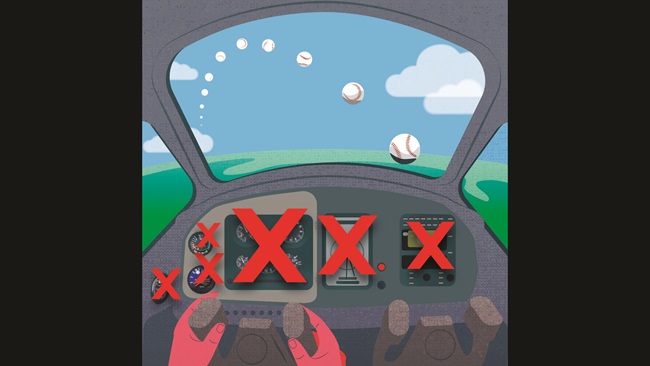
An aircraft is inbound on the 144-degree approach course toward an NDB, cleared to a holding fix at the intersection of the 224-degree radial from a VOR. There’s a strong west wind; the pilot has discovered that holding a 160-degree heading steadies the ADF needle 16 degrees left of the fixed card’s 12 o’clock position. (Since 160 minus 16 equals 144, the aircraft is on course.)
Now to identify the intersection. With the VOR radial selected and a FROM indication, the OBS is deflected left as the aircraft flies toward the fix. The OBS centering will herald arrival at the fix and is the signal to begin the outbound turn.
What should be the rollout heading outbound? When should you start timing the outbound leg?
Welcome to the nitty-gritty world of intersection holding.
What is holding, exactly? Here’s the book description. “Holding is a predetermined maneuver which keeps the aircraft within a specified airspace while awaiting further clearance from ATC.”
That definition describes holding as a predetermined maneuver, but that’s a broad stroke. Depending on how navaids collaborate to create a holding fix, the technique for holding will vary.
Now you’ll confront some of that variance.
The turn to the outbound course must be stopped short of the 324-degree reciprocal of the approach course to compensate for the “known wind.” Also, expecting a headwind component outbound, your goal will be to nail down an outbound leg time that produces a one-minute inbound leg (below 14,000 feet).
“Let’s try a minute and 20 seconds outbound for starters,” you say to the onboard observer and critic.
“When will you begin to time outbound?” comes the reply.
“Abeam the fix,” you respond.
Did your headset just fail, or was there no affirming grunt from the other seat?
It’s not the headset. Glancing at the plate again, you grasp that it’s not possible—with this equipment—to determine the abeam position.
Why? The VOR radial does not cross the course at a precisely perpendicular angle. The right plan is to start timing on completing the outbound turn. The next inbound leg’s outcome should help you make any further adjustments to headings and timing.
Or with luck, you will be cleared for the approach—meaning that in a few minutes you will be able to ponder the nuances of this “predetermined maneuver” from a booth in a warm café.



